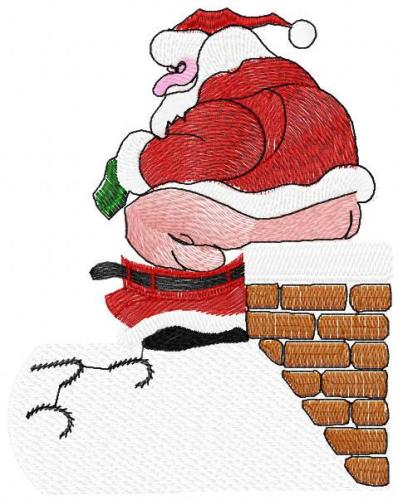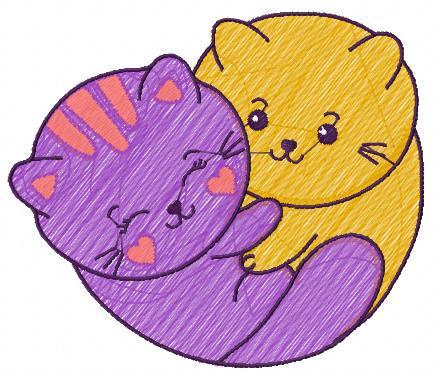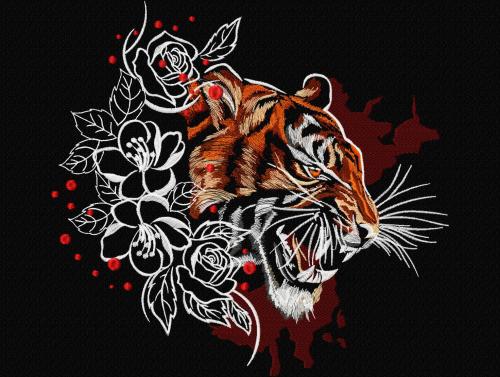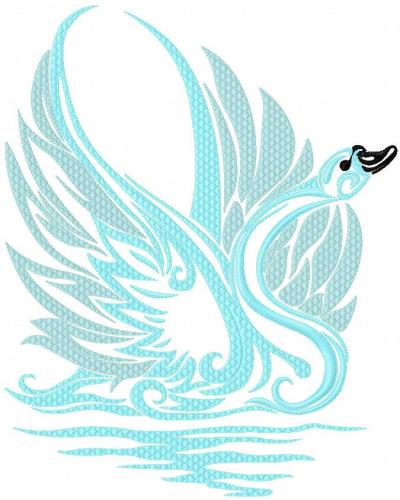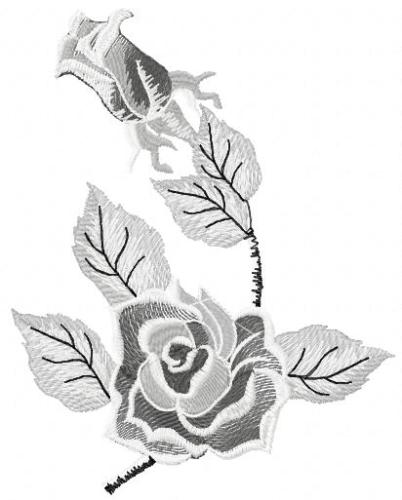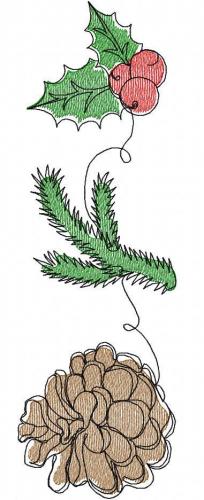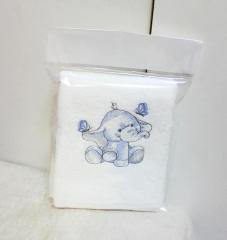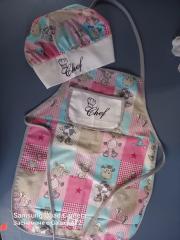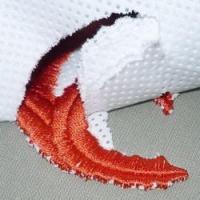
Original text by: Marina Belova
I've already written about my attempt to find a replacement for the water soluble film, but today I decided to seek for a 3D Puff alternative in case there it will be unavailable.
My starting point was the concept of "embroidery on cardboard", which exists in the hand embroidery. On this assumption, I began to replace 3D Puff with its paper equivalents, which happened to be at hand.
I created a design according to the same principles that regulate the embroidery on 3D Puff. The only thing that differs here is that first, the underlay for the whole object is embroidered, then the machine makes a stop to allow me to remove the paper leftovers, and only after that comes the finishing layer of satin stitches.
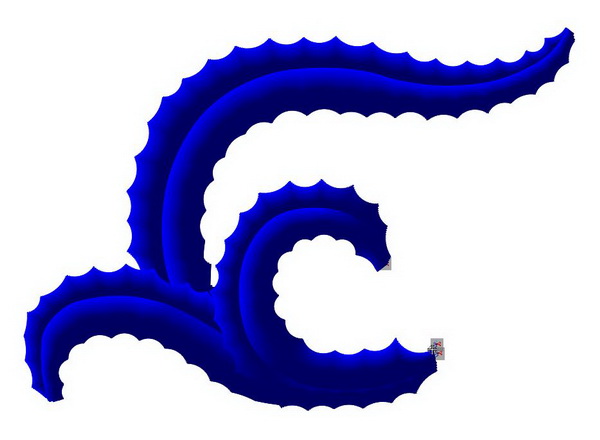
First, I took the dense (95 g) tearaway stabilizer leftovers, which I usually use for the chevrons. I folded it in 4 layers and put into the hoop:
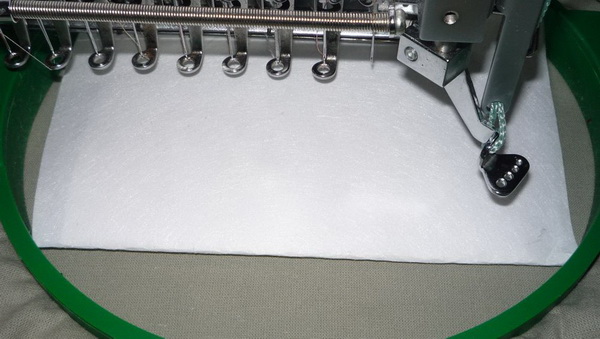
Having embroidered the first layer of underlay, I tried to tear off the stabilizer. It didn't tear easily, leaving fibers behind — they were not very long, but yet visible, and they stuck out in all directions. From all appearances, in case of using paper the density of the underlay is not sufficient for a neat tearaway line:
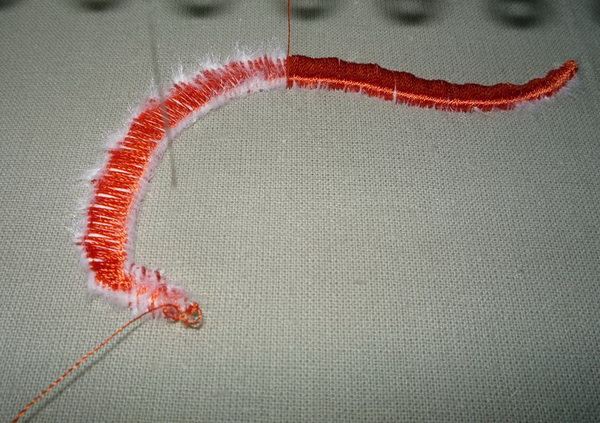
The finishing satin stitch layer did not cover them completely:

But the embroidery was puffy enough. These fibers may be easily singed with a lighter.
After this attempt, I remembered that I had a tearaway paper stabilizer (60 g), which tears neatly along the perimeter of the embroidery, and I thought that it might be appropriate. I folded it in 5 layers:
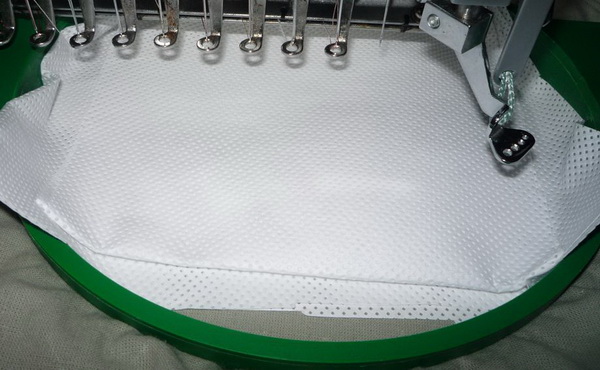
Embroidered the underlay:
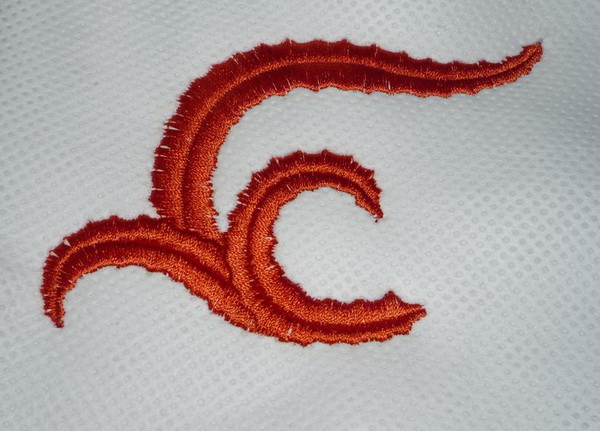
The stabilizer tore off easily. But instead of the fibers rather big pieces of paper were left:
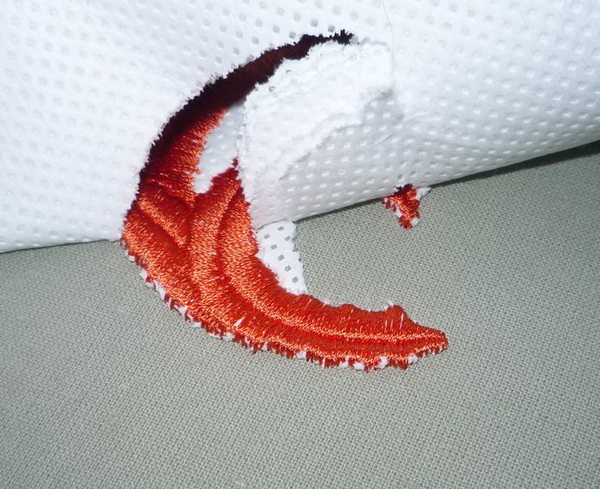
The finishing layer of satin stitches did not really cover those bits and the white paper showed in between the stitches. I did not manage to fix it, for on this kind of paper a lighter cannot be used:
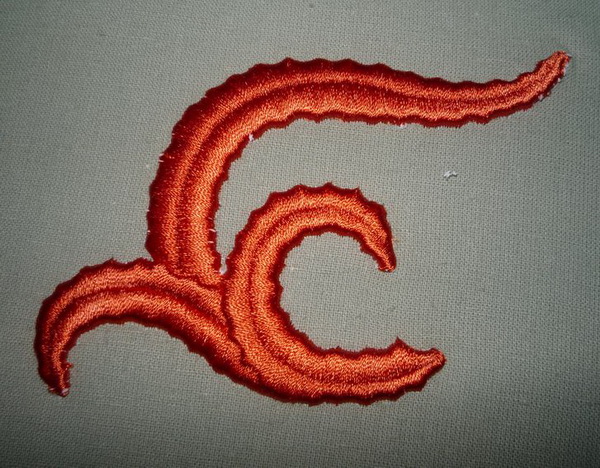
But how puffy the embroidery is!

When embroidering on this perforated stabilizer, I got an idea to use paper napkins, for their textures are very similar to each other. And the napkins tear so easily! So I decided to embroider on them:

It was a very unfortunate experiment — tearing them off required considerable effort, and there were very ugly pieces left:

The finishing layer of satin stitches covered them rather badly, and the leftovers stuck out in all directions:
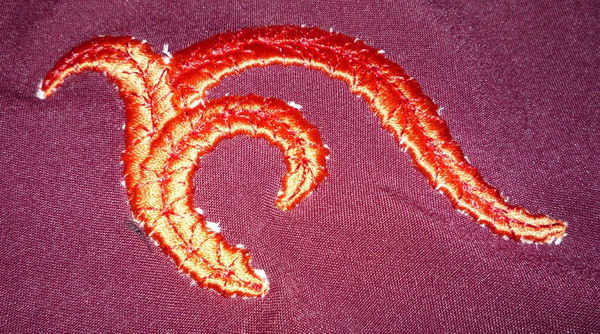
After this failure I found a piece packaging board (left from a T-shirt) and decided to put it to a test:
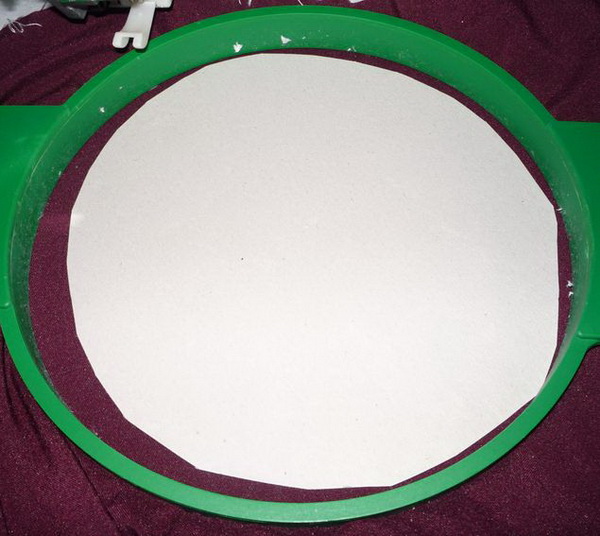
This is how it looks with understitching:
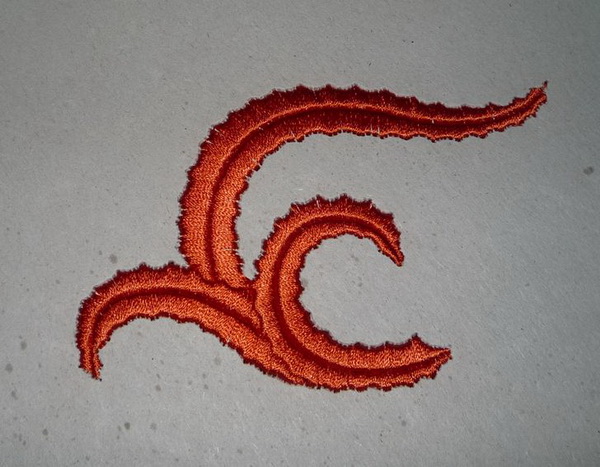
The cardboard tears off rather neatly leaving very small pieces behind:
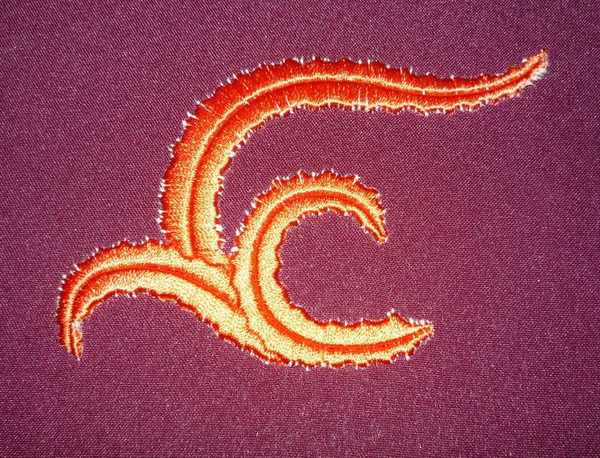
These pieces are easily covered by the finishing layer of stitches; nothing sticks out and satin columns look wonderful:
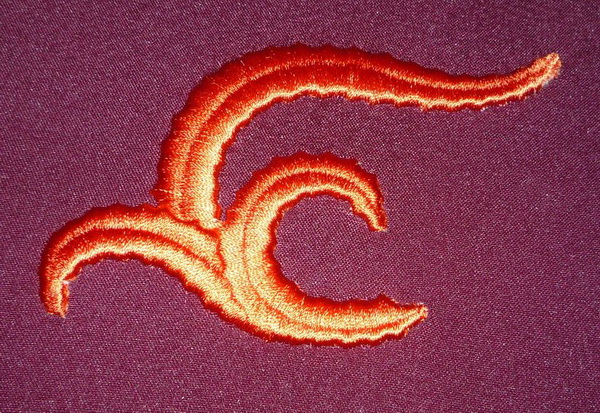
The summary is as follows: You can replace 3D Puff with other materials. But you will have to test them all and find the right stitch parameters for digitizing. For me, the ordinary cardboard turned out to be the best of all. It is quite possible to embroider on it, even if you hoop 2 layers of it for additional puffiness. But you'll have to use a thicker needle, no less than #80. Of course, not any cardboard is good, you'll have to find one that tears easily, but I was lucky: mine did. But if you don't have the cardboard, you can choose something else from the materials readily available. Using stabilizer for 3D embroidery is a bit harder, with all these pieces and yarns, but you can manage without 3D Puff anyway.
P.S. Two of my first attempts to find an alternative for 3D Puff can be found here and here.
-
 1
1


